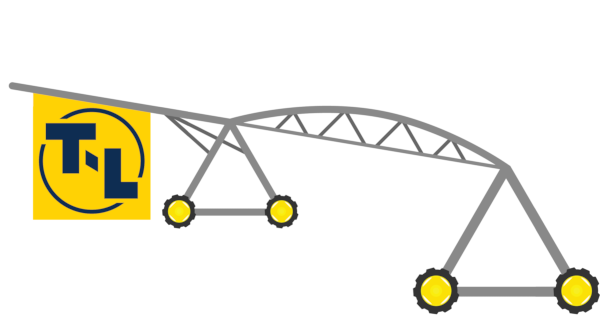Dustin Donley
"The fact that we’re putting on so much of our fertilizer through the pivots, particularly on grass, is one of the reasons I prefer the T-L pivots."
When it comes to Oklahoma farmers, Dustin Donley certainly doesn’t fit the mold. To begin with, he’s a first-generation farmer, having grown up near Mooreland, Oklahoma, where his father worked for an oil company.
“During high school and college, I worked for a farmer who taught me a lot of what I needed to know,” says Donley, who farms a little over 5,000 acres just south of Mooreland. “It’s something I’ve always enjoyed, so farming has become a major sideline to a construction company that I also own and operate.”
Secondly, his priorities involving irrigation would seem to be reversed in the minds of most producers. Although he grows nearly 4,000 acres of wheat annually, nearly all of it is dryland cropped, while more than 1,300 acres of Bermuda grass is irrigated. That’s because Donley says he can make more profit from beef on irrigated grass than he can on irrigated wheat.
“We’re about 99 percent wheat and cattle,” Donley relates, noting that he typically runs about 800 head of Angus-cross cows. “I have a little bit of milo that I use in rotation with wheat, along with about 160 acres of corn that I cut for silage. But eight of the 13 pivots I own are planted to Bermuda for hay and grazing.”
The three additional pivots, he says, are planted to corn, teff grass, milo or wheat, depending on the need for silage, winter forage or a rotation crop. In addition, much of the dryland wheat is grazed during the winter and early spring, which means he only harvests about half of the 4,000 acres that he plants each year.
“We usually graze wheat until around June 15,” he says “As a result, the cattle are on wheat about four months of the year and on Bermuda the other eight months.”
If there’s any doubt about the value of irrigation on grass, Donley says that with an annual rainfall of around 25 inches, he could normally support one cow/calf pair for every 15 to 20 acres of dryland pasture. Yet, with irrigation, his fields of Bermuda can support one pair per acre. Once calves reach approximately 1,000 pounds on grass and corn silage, Donley ships them to a feedlot in Gage, Oklahoma, where he retains ownership until they are marketed.
While the extra water alone accounts for the increased volume of Bermuda, Donley says he also applies fertilizer through the pivots at regular intervals throughout the growing season.
“It’s mainly 32-0-0 (nitrogen-phosphate-potassium), but we apply whatever the agronomist says the crop needs,” he adds. “The fact that we’re putting on so much of our fertilizer through the pivots, particularly on grass, is one of the reasons I prefer the T-L pivots. I like the constant flow of hydraulics and the steady movement of the pivots that ensures that fertilizer is applied evenly throughout the field. Plus, I don’t really like electricity underneath water.”
Donley says he bought his first T-L pivot in 2004 after seeing a friend put one on his property.
“I got to visiting with the owner of Southwest Center Pivots and bought the first one from him,” he recalls. “Since then, we’ve continued to buy more land, drill more wells and put up more T-L pivots to the point we now have 13 total. Of course, we continue to work with Southwest Center Pivots on service and sales. If we have any kind of problem, which has been rare, they usually have us up and running within a day.
“Thanks to irrigation, we basically have a guaranteed forage source,” he relates. “And as long as you keep it watered and fertilized, Bermuda comes back every year. If you treat it right, it will treat you right,” he concludes.



